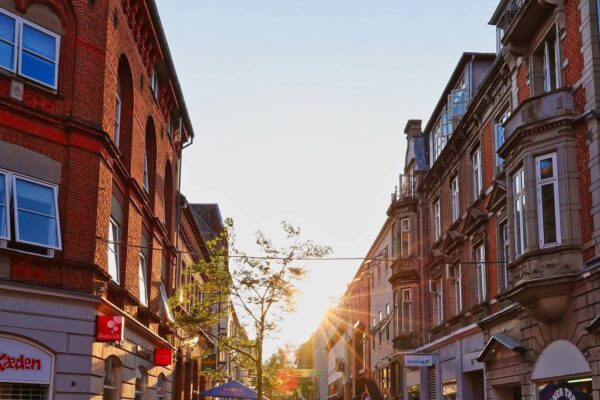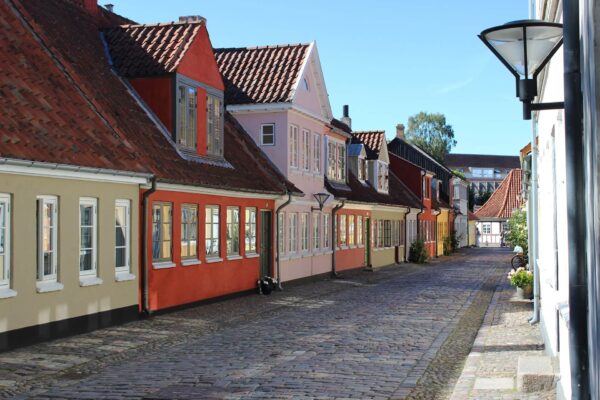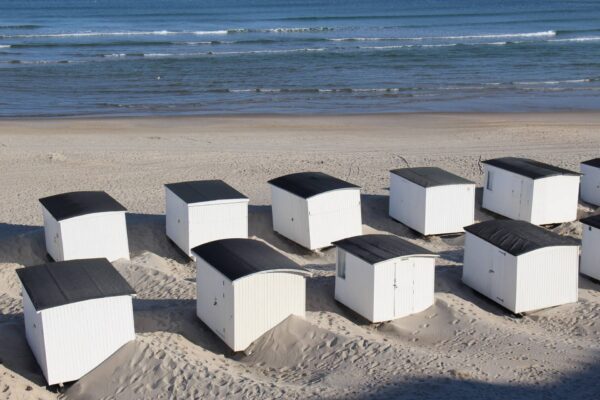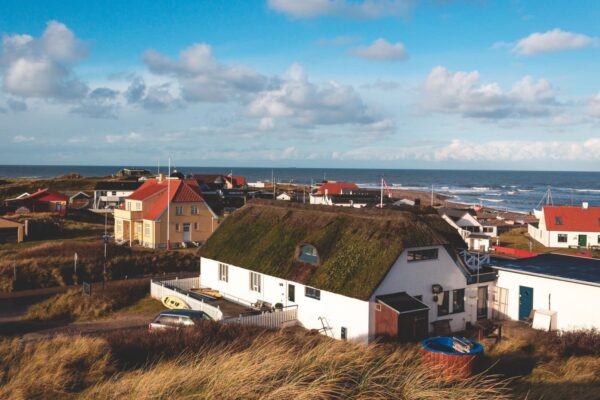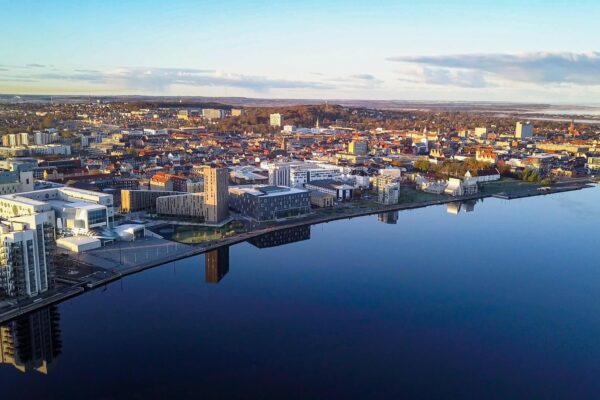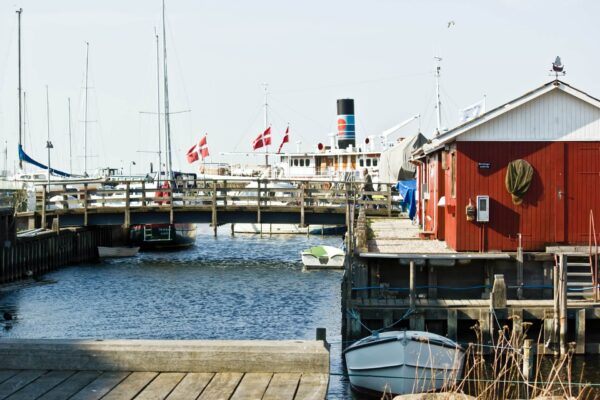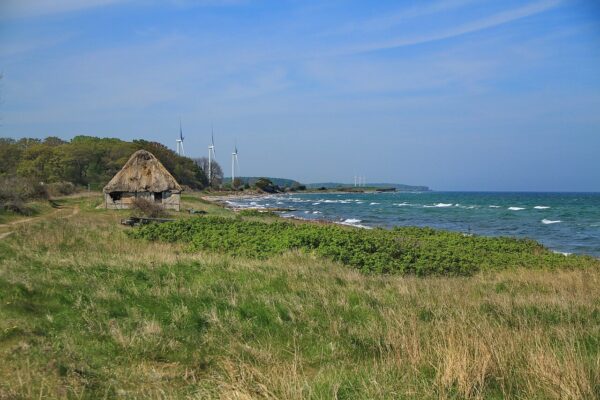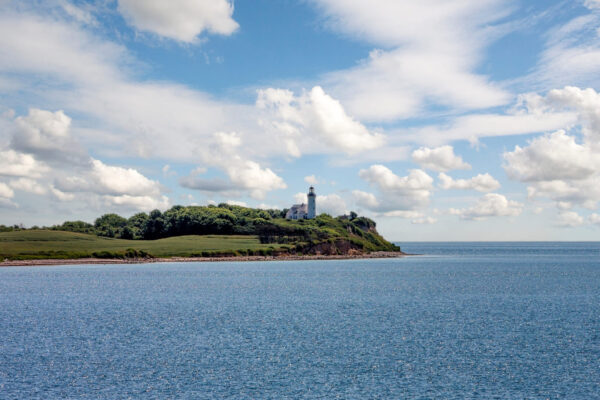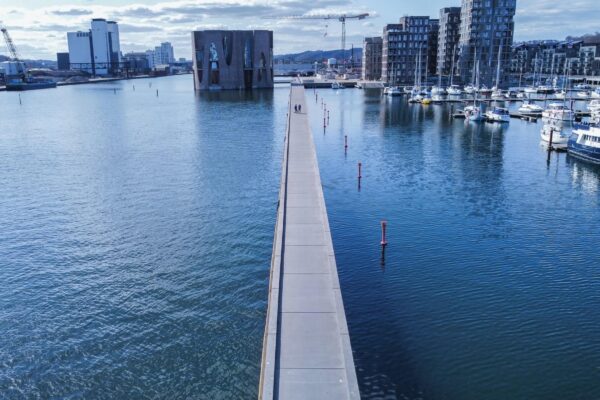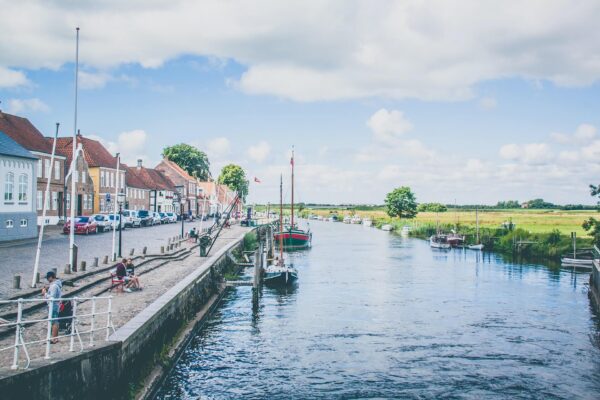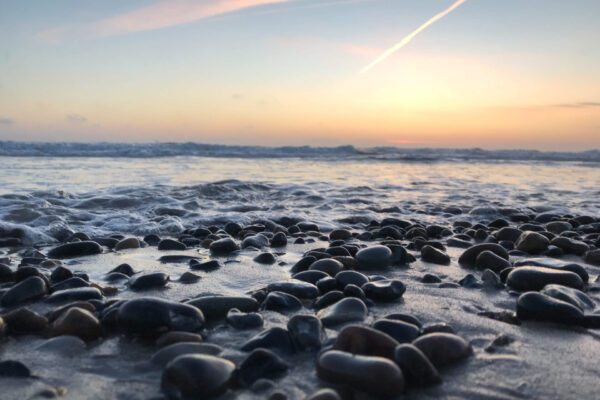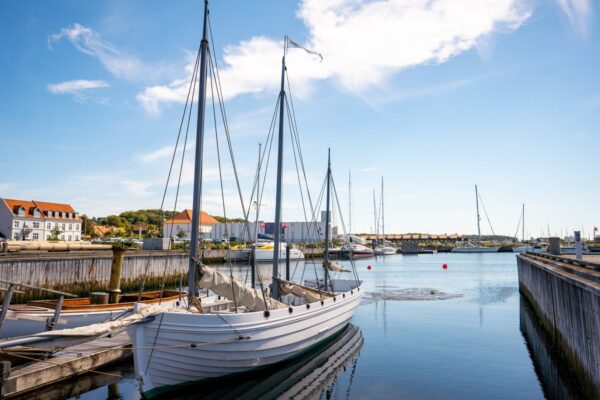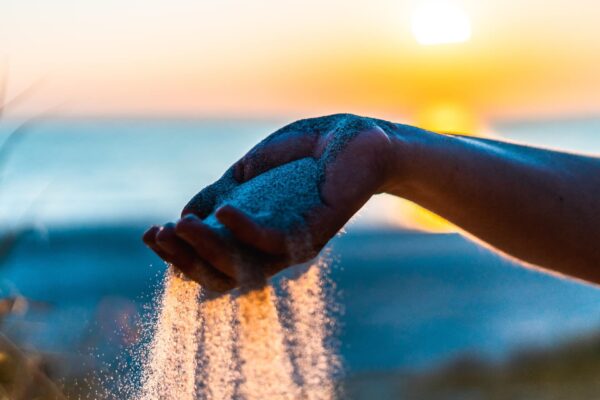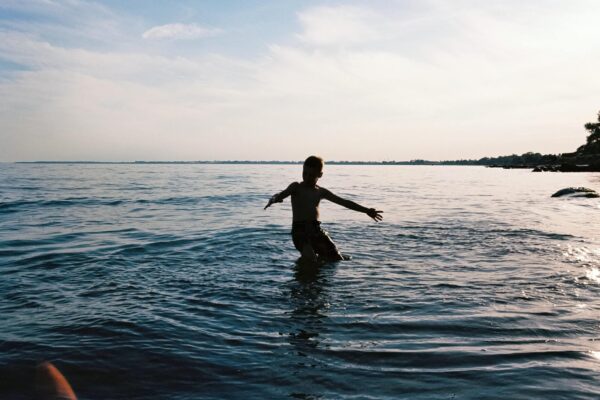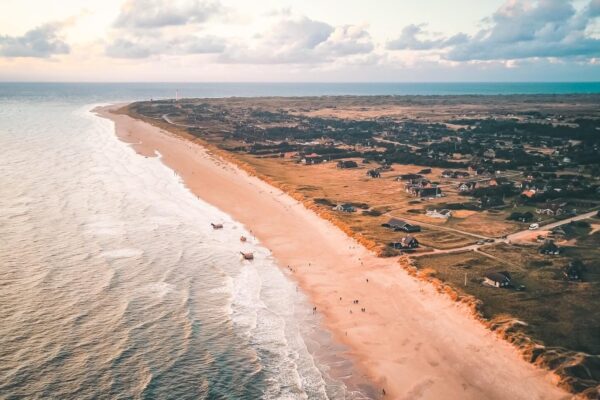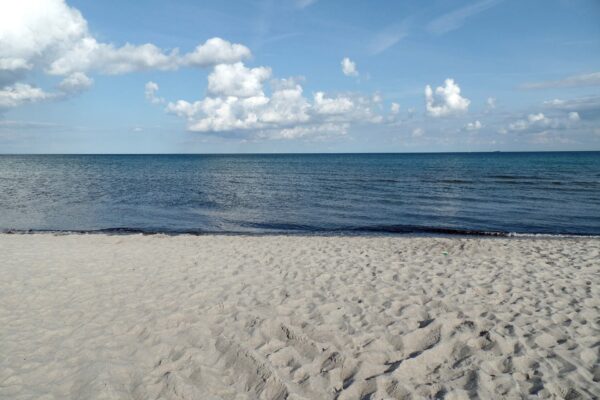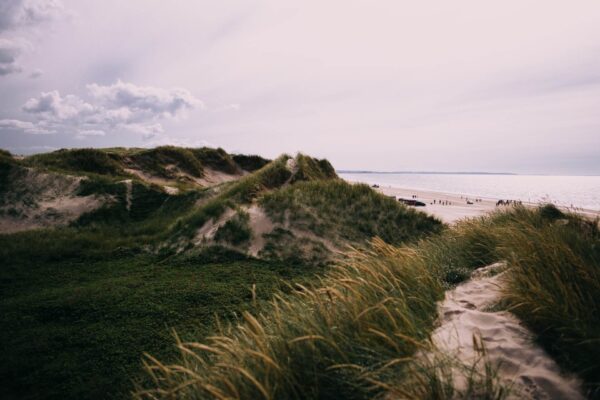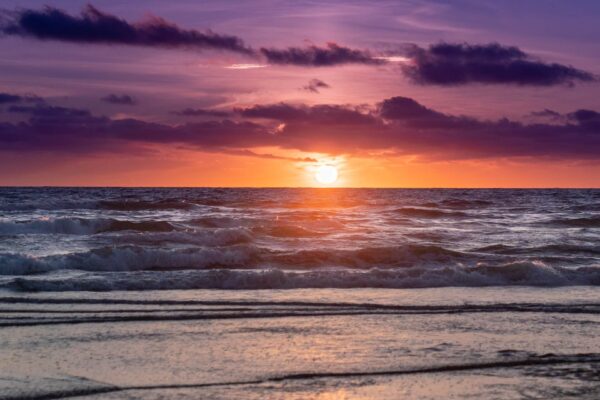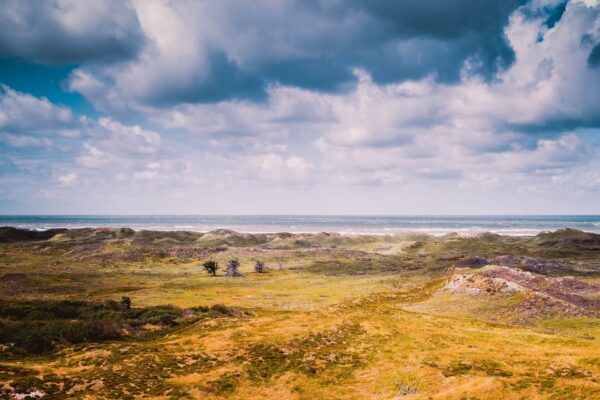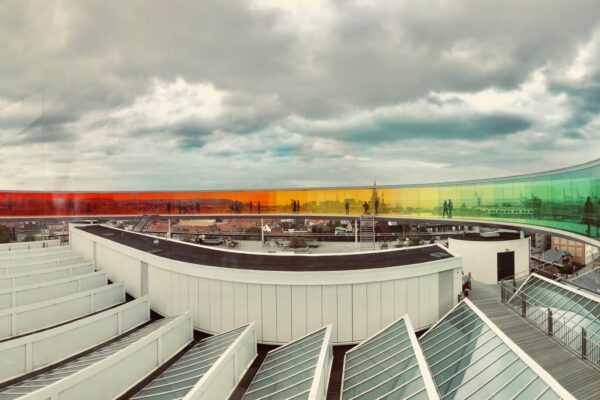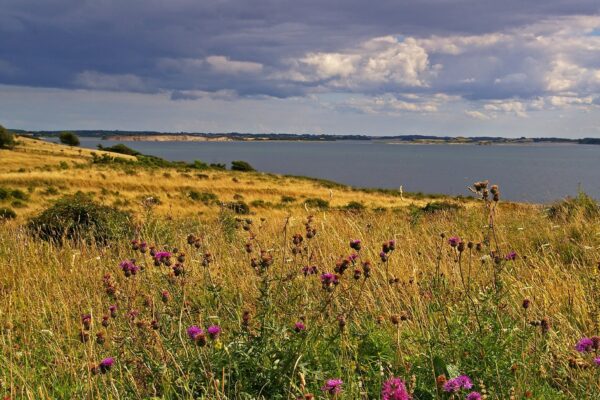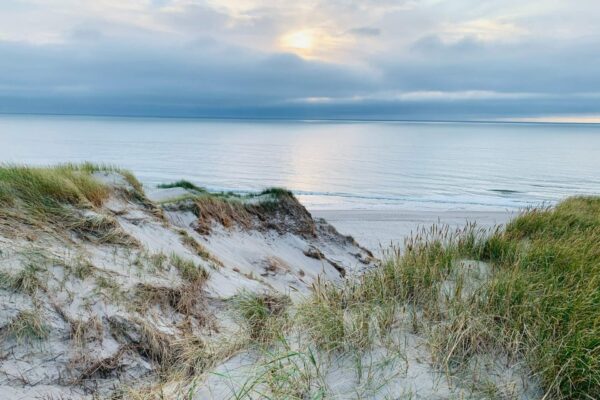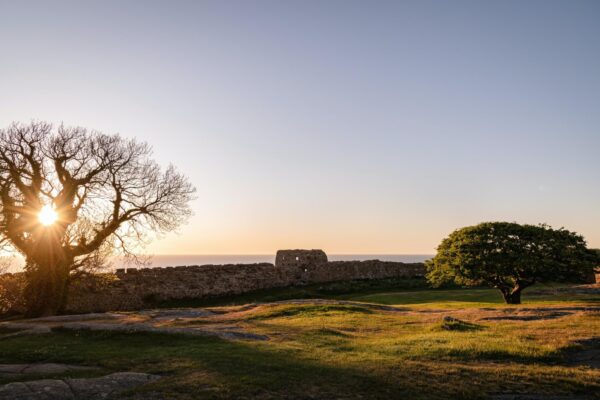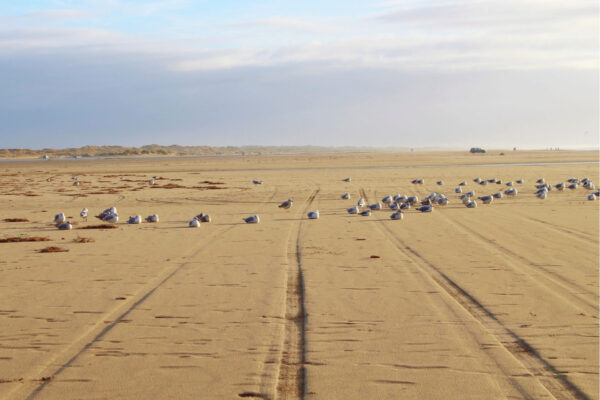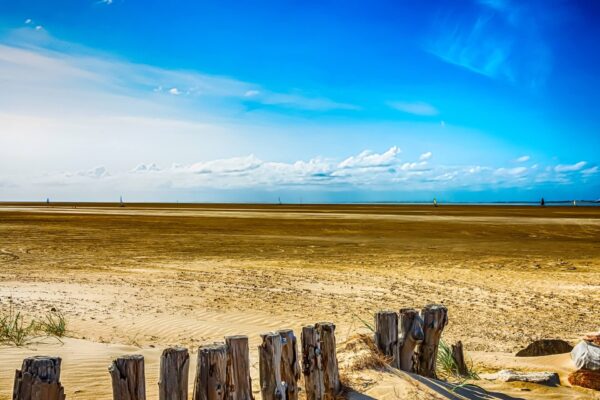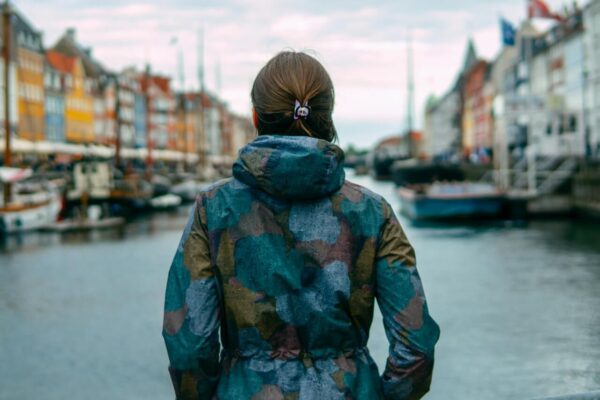White chalk cliffs, shallow water and attractions for all ages: welcome to Lolland! The Danish island in the Baltic Sea is just a stone’s throw from Central Europe and is a popular holiday destination. Beautiful beaches, cosy small towns and a variety of exciting activities make for a very special trip. Find out everything you need to know about Lolland here!
Why should you travel to Lolland?
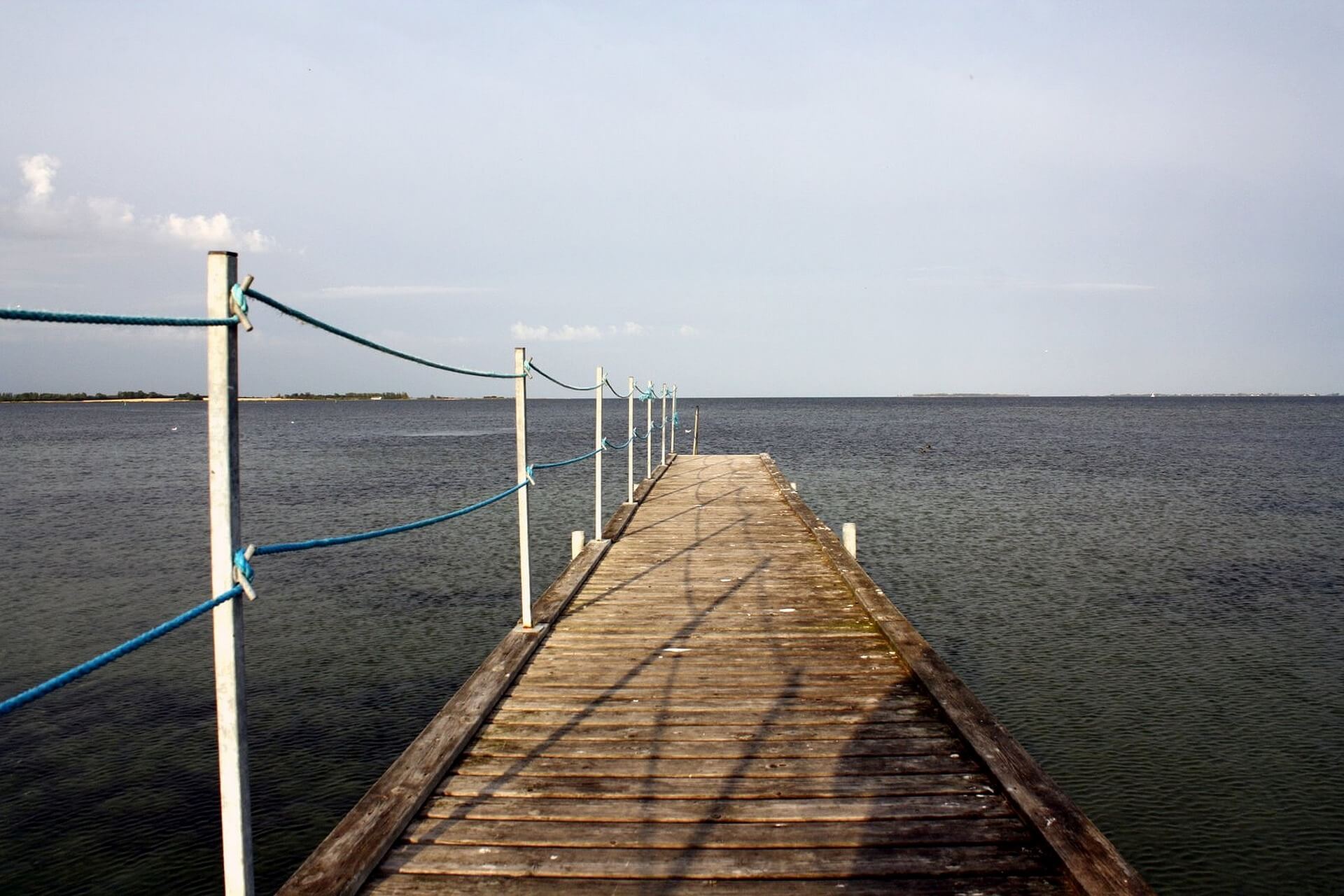
Sun, beach and sea – Lolland is the perfect place for a beach holiday. But the Danish island in the Baltic Sea has much more to offer: the picturesque island towns are great for a leisurely stroll, the fascinating nature and numerous lakes invite you to go on a variety of exploratory tours, and history fans also have plenty to discover.
If you have ever travelled to Scandinavia by car, there is a good chance that you have already been to Lolland – the popular ferry service from Puttgarden arrives in the island town of Rødby. So why not turn a short transit into a longer stay?
Island of lakes: Lolland used to be called “Laaland“, which can be translated as “water country”.
Where is Lolland?
Lolland is Denmark’s third largest island in terms of area and is located in the south of the country in the Baltic Sea. It lies to the south of Zealand and to the west of Faster and Mön, with which it is well connected. To the west of Lolland are the islands of Langeland, Æro and Funen. The Danish capital Copenhagen is about 150 kilometres away by car.
Weather on Lolland
Lolland has a mild climate all year round, not too cold and not too hot. The best time to visit is from June to September, with pleasant temperatures of up to 20° Celsius and little rainfall. In the two peak summer months of July and August, average temperatures are around 20° Celsius. The coldest months are January, with an average temperature of 3° Celsius.
Water temperatures can also reach up to 20° Celsius in summer and average 5° Celsius in winter.
Places on Lolland
Maribo
The small trading town of Maribo is located in the centre of Lolland and is the administrative centre of the island. Here you can take a wonderful stroll through the alleyways and lose yourself in the small-town idyll. The town also has a lot to offer in terms of history and culture: The former monastery was founded in the 15th century and Maribo Cathedral, built in 1808, is considered one of the most important works of brick Gothic architecture in Denmark. Maribo also has an open-air museum, various museums and an annual jazz festival.
Nakskov
With over 12,000 inhabitants, Nakskov is the largest town on Lolland. It is located in the west of the island on Nakskov Fjord and was founded in the 13th century. Nakskov also has a picturesque old town centre with cobbled streets and houses dating from the 16th to 18th centuries, which invites you to stroll and explore – the pedestrian zone is one of the oldest in Denmark. For culture vultures, a visit to the Gothic St Nicholas Church, which dates back to the 15th century, is a must. Nakskov is also home to the Danish Sugar Museum and a ship and maritime museum, as well as the Nakskov Fjord Nature Park.
Rødby
Rødby in the south of Lolland may only have a population of around 2000, but it is perhaps the best-known place on the island. This is mainly due to the ferry terminal in Rødbyhavn, where the ferries from Puttgarden in Germany arrive. Rødby also has a large water park and a parachute club where action is guaranteed.
Sights and activities on Lolland
Knuthenborg Safari Park
One of the best-known excursion destinations on Lolland is certainly Knuthenborg Safaripark. The largest safari park in Northern Europe is located just north of Maribo in the northern centre of the island. Covering an area of over 600 hectares, it has been home to a large number of animals since 1969 and now has over 40 species and over 1000 animals. Most of the park can be accessed by car, but you can also leave your vehicle in some places.
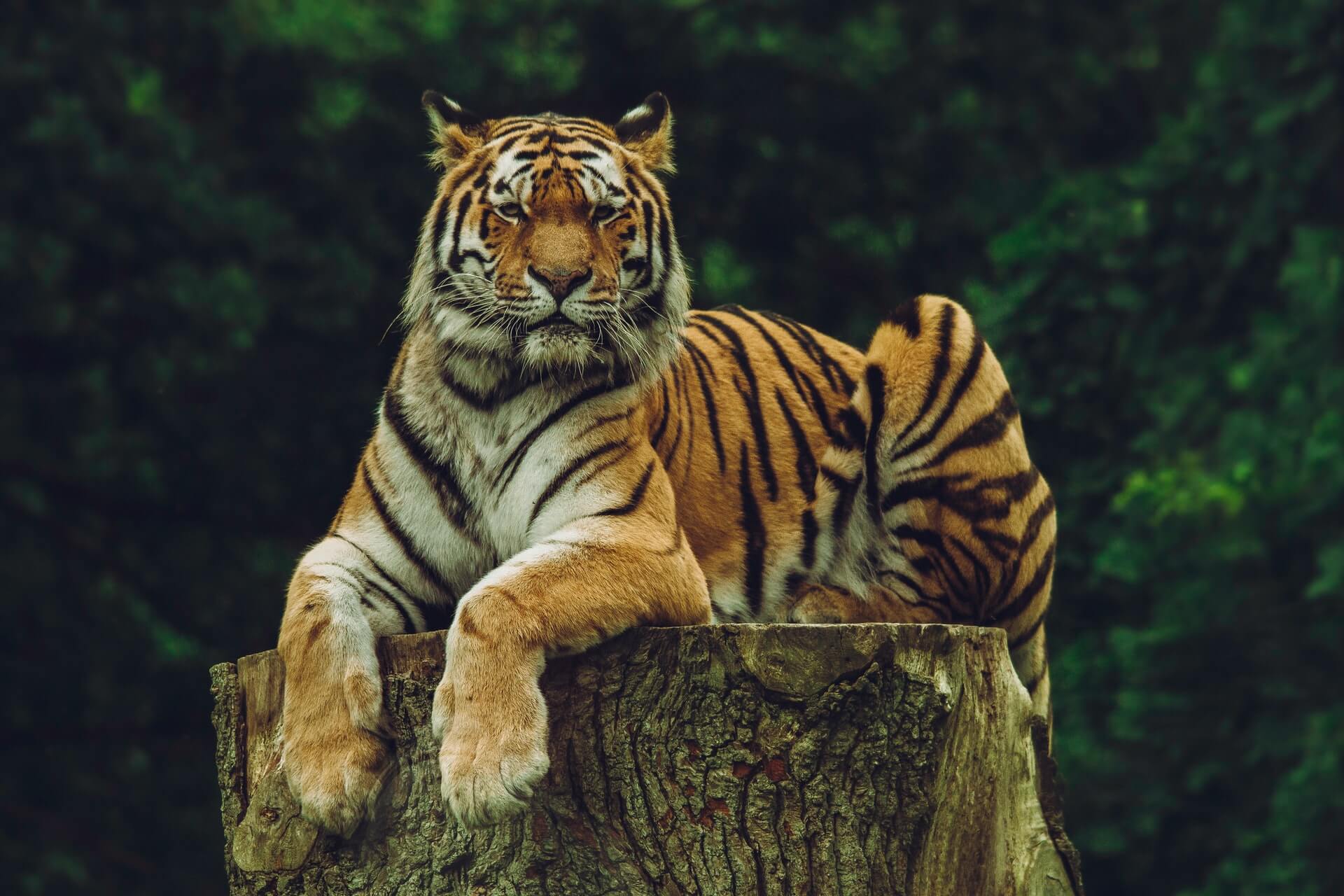
The safari park is divided into different areas, which are orientated towards the continents of the world. For example, animals from Africa (such as zebras, giraffes and rhinos) live in the “savannah” area and water buffalo and Siberian tigers live in the Asian area (in different enclosures, of course). There is also an area especially for monkeys and primates, as well as one for native animals such as donkeys and goats. In the “sequoia forest” there is a dinosaur exhibition in which numerous models of various dinosaurs can be discovered.
The safari park is open daily from 10 a.m. to 6 p.m. in the high season from the end of June to August and from 10 a.m. to 5 p.m. in the low season between August and October.
Beaches on Lolland
As the third largest island in Denmark, Lolland has a variety of beautiful beaches to offer. What all the island’s beaches have in common is that they are spacious, fine sandy and gently sloping, making them particularly suitable for families with children. Many of the beaches also fly the blue flag, which indicates that the water here is particularly clean and clear.
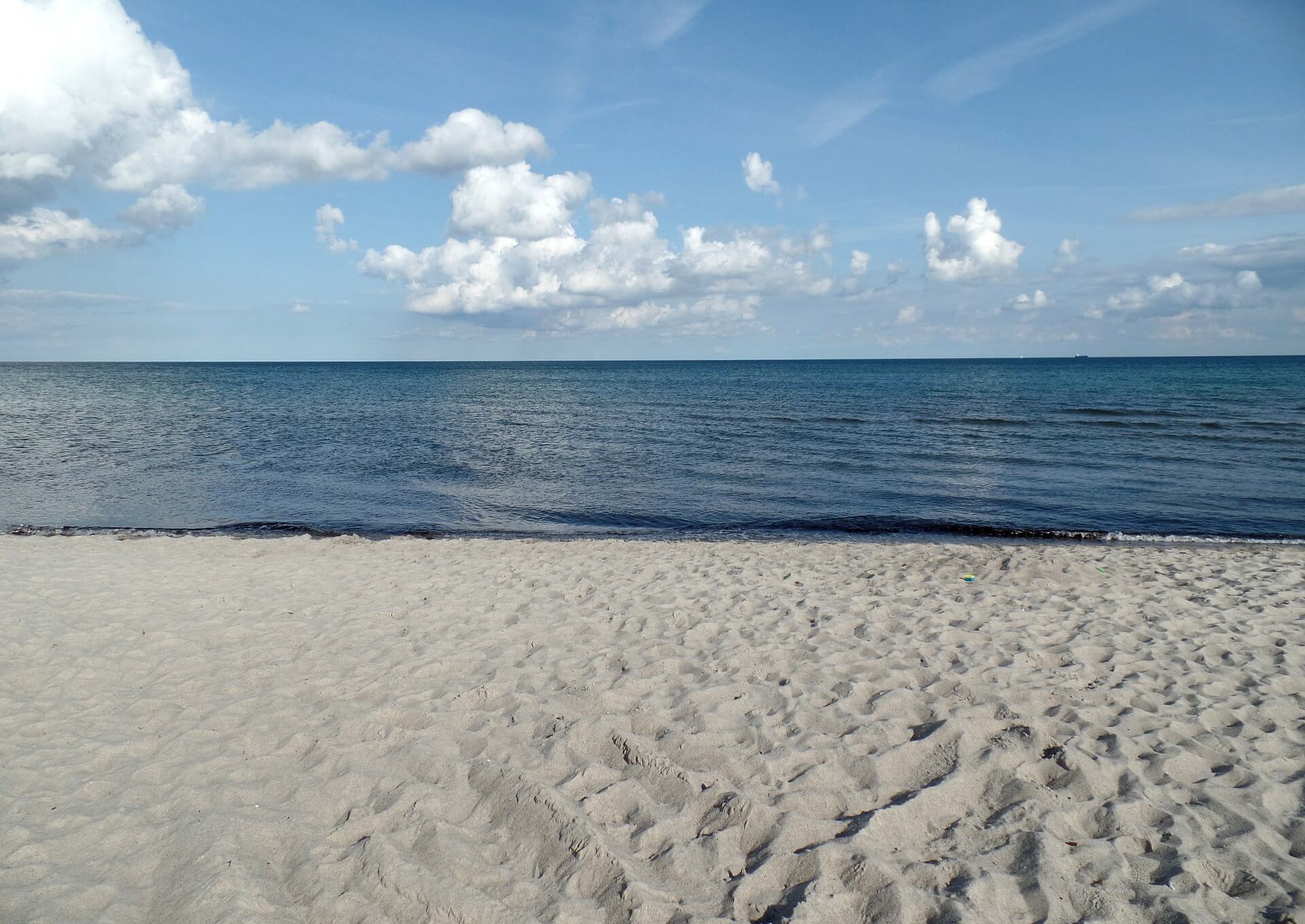
One of Lolland’s most beautiful beaches is certainly Marielyst in the east of the island, which is very child-friendly with its shallow, calm waters. Hestehovedet beach near Nakskov boasts the second longest bathing bridge in Denmark and is located in the Natura 2000 nature reserve, which is why many birds can be observed here.
Kramnitze beach in the south-west of the island is a paradise for surfers and anglers in particular, and the surf, winds and sandbanks along the entire south coast of Lolland generally offer very good conditions for surfers. Anglers can catch sea trout and garfish here – if you are travelling in July, don’t miss the garfish festival in Kramnitze.
Prehistoric monuments on Lolland
Lolland is home to many monuments and relics from prehistoric times. In Frejlev Skov forest, for example, there are numerous prehistoric graves, including more than 100 Bronze Age burial mounds, nine long dyssers, four round dyssers and five passage graves. The graves date from between 3500 and 2800 BC and are therefore of great archaeological interest.
Also worth seeing are Glentehøj, a passage grave in the north-west of the island, and Kong Svends Høj, one of the largest and best-preserved passage graves in Denmark. There are also several rune stones on the island, the most important of which is probably the Tillitse rune stone.
Dodekalitten
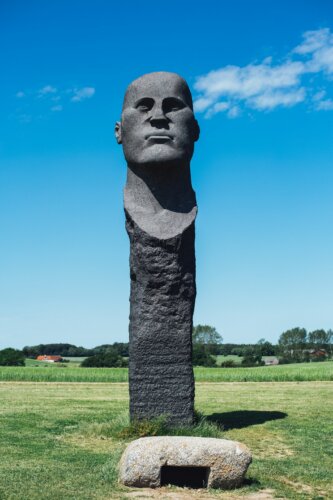
In the north-west of Lolland you will find the impressive stone monuments Dodekalitten, also known as “Denmark’s Stonehenge”. The artwork by artists Thomas Kadziola and Wayne Sigel consists of 12 sculptures and matching background music, which are placed in a circle of approx. 40 metres in diameter and will be completed in 2025. At the right time of day, a mystical atmosphere can be created.
The story behind the Dodekalitten is based on a group of travellers who came to Lolland 7500 years ago, presumably after the Bosporus broke through and their homeland fell victim to floods and high water. The Dodekalitten are a reminder of those emigrants and their culture.
Accommodation on Lolland
Holiday cottages on Lolland
As is usual in Denmark, there are numerous holiday homes spread across the entire island of Lolland. The advantage of holiday homes is that they offer plenty of space and comfort, as well as cooking facilities, but are often inexpensive. A holiday home is therefore particularly suitable for larger groups and families. In many holiday homes it is also permitted to bring pets, so that the dog does not have to stay at home, but can also enjoy the island air.
Camping on Lolland
If you prefer things a little simpler and closer to nature, or want to arrive directly with your own motorhome or camper, you can stay at one of the campsites on Lolland. Camping in Denmark is very popular, so there are also a number of campsites on Lolland, all of which are located directly on the coast and by the water. The advantage of camping is that you are very independent, but don’t have to do without all the comforts: most campsites now offer services such as bread delivery, internet and snacks.
Travelling to Lolland
Travelling by car and ferry
Lolland is very easy and quick to reach by car from Germany and Central Europe. This is because there is a direct ferry connection to Lolland: the Scandlines ferry between Puttgarden and Rødby, which only takes 45 minutes for a crossing. Puttgarden is excellently connected to the German motorway network, with motorway 1 having its northern starting point here. The ferry connection is also part of the European route 47, which continues to Sweden via Lolland.
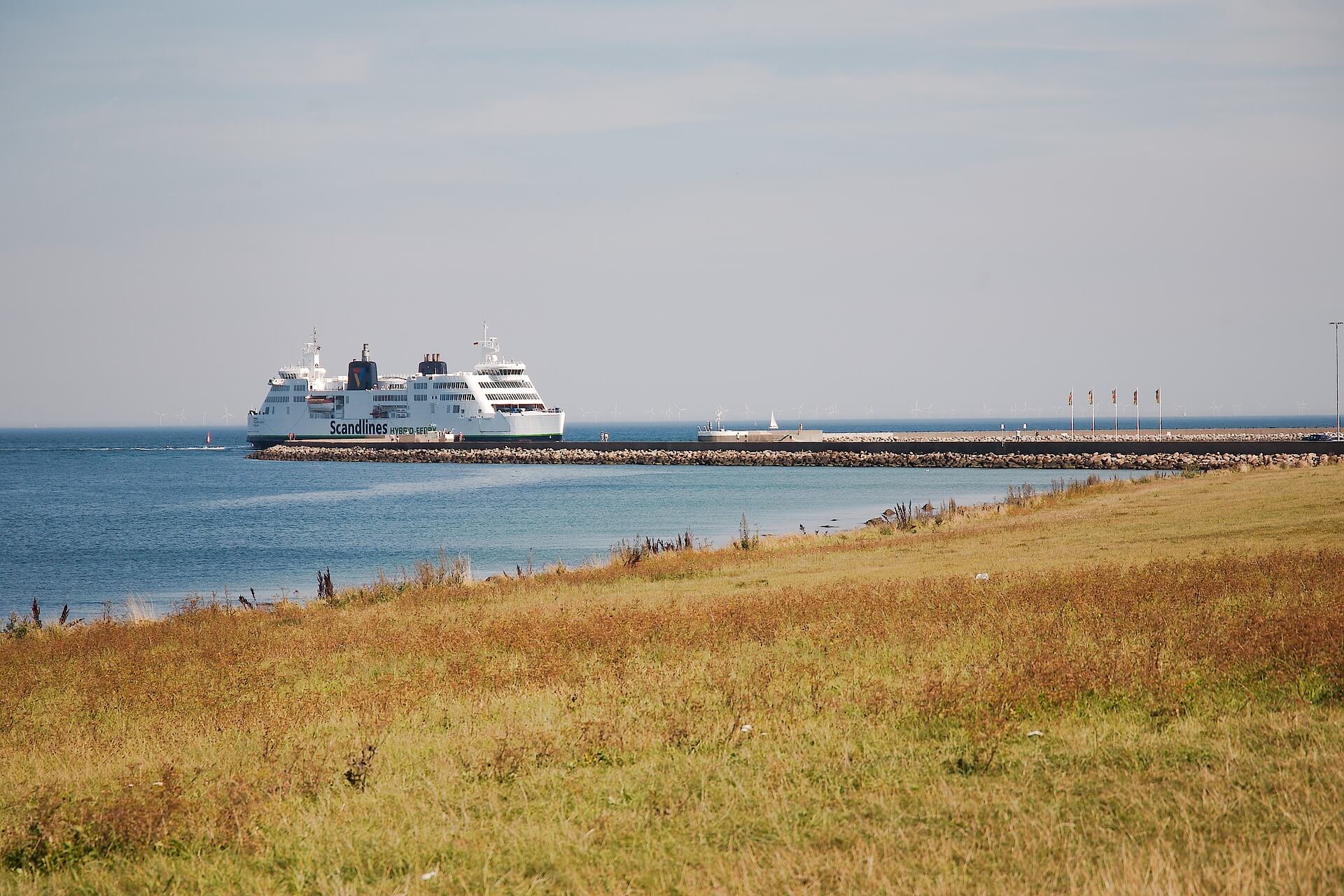
Travelling by train
Travelling to Lolland from Central Europe by train is also very easy and convenient. There are many regular connections from Hamburg to Denmark, and the railway networks of both countries are connected. The trains between Puttgarden and Rødby then also use the ferries, alternatively you can travel via Jutland and then change there to connecting trains travelling in the direction of the islands.
Travelling by plane
If you want to travel quickly and easily by plane, you should head for Copenhagen. Many airlines offer direct flights to the Danish capital from various airports. From Copenhagen, you can then either travel on to Lolland by train, or alternatively organise a hire car.
